Real Images Of The Solar System: Before And After The Digital Revolution
🌎 Get Our Merch designed with ❤ https://www.youtube.com/channel/UCNYaxPiba3oxmeL_3jKxnYA/store
💫Get 10% off Under Lucky Stars and enjoy our star maps completely custom-made 💫 https://www.underluckystars.com/INSANECURIOSITY
Before modern telescopes, humans could only imagine what the surface of the sun and the planets looked like. Now advanced technology has made it possible to get in close, and take images of the Sun and the planets deep in our solar system.
If you guys have the patience to follow us for about ten minutes we will show you the profound difference between the planetary images of a few years ago, definitely "ugly" and those that delight our eyes today!
- -
Subscribe for more videos ►https://www.youtube.com/c/InsaneCuriosity?sub_confirmation=1?
Business Enquiries ► Lorenzovareseaziendale@gmail.com
We have Another Channel ► "Down The Rabbit Hole" https://www.youtube.com/channel/UCqdTuLTekIsdgaIKjwj4D-A
- -
But one can go back even further... There was indeed a time when planets, apart from the Sun and Moon, could only be perceived by us earthlings as more or less bright points of light. This period lasted from when the first representative of our species raised his eyes to the sky wondering for the first time what were all those lights that lit up after the sunset, until the invention of the telescope, in 1609.
The next period is from the invention of the telescope until the early sixties of the last century. Approximately three centuries and a half, during which astronomers have first tried to draw the scarce (and often illusory) details that they could discern on planetary disks devastated by atmospheric turbulence, and then pass, at the beginning of the twentieth century, to the first timid attempts of photographic shooting.
With mostly disappointing results, always due to turbulence even more exacerbated by the fact that the poor sensitivity of the films of the time forced astronomers to very long poses even with bright subjects such as planets. And the longer a pose is, the more turbulence cancels contrasts and erases details.
In short, we can certainly say that until the sixties the planetary photos taken from Earth (even those of the great observatories like Palomar and Mount Wilson), judged with the eyes of the present, could be defined as very disappointing. This state of affairs lasted until the first interplanetary probes, equipped not with film... but with cathode-ray tubes, entered the field. The Mariner 4, for example, in 1965 sent home the first close-up photos of the Martian surface, in black and white and with a resolution (today ridiculous) of 210 lines by 210 columns. Sufficient, however, to destroy forever the theory of channels and to show us a world very different from what we had imagined. Mars appeared in fact studded with craters, almost like the Moon. It did not have a magnetic field worthy of note (and therefore was exposed from solar radiation) and the atmosphere was cold and thin. No evidence of alien civilizations, of course, nor any hope of easy exploration.
But the image we had of the solar system began to change totally only in 1976 with the Viking probes that landed on Mars, and then with the Pioneer and Voyager in the eighties. It was then, in fact, that the old dimensionless points of light, and the ugly blurry photographs of the turn of the century, suddenly became shapes, colors, and phenomena in flux. No longer faded postcards, but worlds and moons with mountains, volcanoes and ice.
In the years that followed all the planets of the solar system were visited and photographed by automatic probes, but also the imaging from the ground, assisted by CCD sensors increasingly large and sensitive made giant processes, giving us enchanting views of the planets closer and more telegenic
- -
"If You happen to see any content that is yours, and we didn't give credit in the right manner please let us know at Lorenzovareseaziendale@gmail.com and we will correct it immediately"
"Some of our visual content is under an Attribution-ShareAlike license. (https://creativecommons.org/licenses/) in its different versions such as 1.0, 2.0, 3,0, and 4.0 – permitting commercial sharing with attribution given in each picture accordingly in the video."
Credit: 00:10:44:23 https://hubblesite.org/contents/media/images/2016/15/3733-Image.html
Nasa / Hubble space telescope
NASA, ESA, the Hubble Heritage Team (STScI/AURA), J. Bell (ASU), and M. Wolff (Space Science Institute)
Credits: Ron Miller
Credits: Mark A. Garlick / MarkGarlick.com
Credits: Nasa/Shutterstock/Storyblocks/Elon Musk/SpaceX/ESA/ESO
Credits: Flickr
#InsaneCuriosity #TheSolarSystem #RealImagesOfTheSolarSystem
Видео Real Images Of The Solar System: Before And After The Digital Revolution автора Подвиги космических пиратов
Видео Real Images Of The Solar System: Before And After The Digital Revolution автора Подвиги космических пиратов
Информация
6 апреля 2024 г. 2:26:50
00:11:35
Похожие видео
 The Planets-Rodrigo Club Mix
The Planets-Rodrigo Club Mix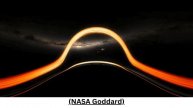 NASA's Stunning New Simulation Sends You Diving Into a Black Hole
NASA's Stunning New Simulation Sends You Diving Into a Black Hole 5 Things You Missed In Gorilla Tags NEW DUNGEON UPDATE
5 Things You Missed In Gorilla Tags NEW DUNGEON UPDATE Надійність гідроізоляції в душовій зоні?
Надійність гідроізоляції в душовій зоні? Переробка забрусу екструдером Лисонь.
Переробка забрусу екструдером Лисонь. Французский ВНЖ: Как Успешно Оформить ВНЖ
Французский ВНЖ: Как Успешно Оформить ВНЖ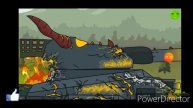 Клип: МЫ МОНСТРЫ мультики про танки
Клип: МЫ МОНСТРЫ мультики про танки ЖК Республика подсвечивает космос!
ЖК Республика подсвечивает космос! 1990 - Special NBC Dayline with Marcy WALKER and A MARTINEZ : Breaking up is hard to do
1990 - Special NBC Dayline with Marcy WALKER and A MARTINEZ : Breaking up is hard to do Отчет ICObench: рынок ico и ieo демонстрирует рост после «криптовалютной зимы»
Отчет ICObench: рынок ico и ieo демонстрирует рост после «криптовалютной зимы» К фактор, не работает
К фактор, не работает Настройка единого проекта STM32 для разных ОС (Windows и Linux)
Настройка единого проекта STM32 для разных ОС (Windows и Linux)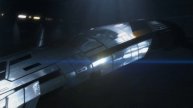 Mass Effect 2 Legendary Edition джефф моро и новая нормандия
Mass Effect 2 Legendary Edition джефф моро и новая нормандия Bruno mars "Talking to the moon" alto sax cover
Bruno mars "Talking to the moon" alto sax cover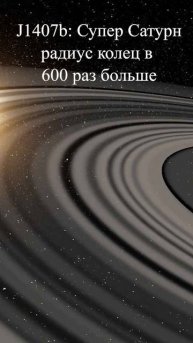 Супер Сатурн такого вы еще не видели #вселенная #космос #открытыйкосмос
Супер Сатурн такого вы еще не видели #вселенная #космос #открытыйкосмос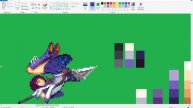 🎨 Sailor Saturn Back Jump 3rd Frame Pixel Art Conversion Time Lapse From DBFC To Arcade Style🎨
🎨 Sailor Saturn Back Jump 3rd Frame Pixel Art Conversion Time Lapse From DBFC To Arcade Style🎨 Extreme Sports: Planet Earth Our Playground
Extreme Sports: Planet Earth Our Playground ❤️ТОП 3 ГОРМОНАЛЬНЫЕ ПРИЧИНЫ ОТЕКОВ #отеки #отекног #отеклица #похудение #целлюлит #какпохудеть
❤️ТОП 3 ГОРМОНАЛЬНЫЕ ПРИЧИНЫ ОТЕКОВ #отеки #отекног #отеклица #похудение #целлюлит #какпохудеть Після ремонта гбц троїть один циліндр
Після ремонта гбц троїть один циліндр «Смартфон Huawei Nova 12i»
Эпизод 4. Активация и обновление базовой системы смартфона
«Смартфон Huawei Nova 12i»
Эпизод 4. Активация и обновление базовой системы смартфона
